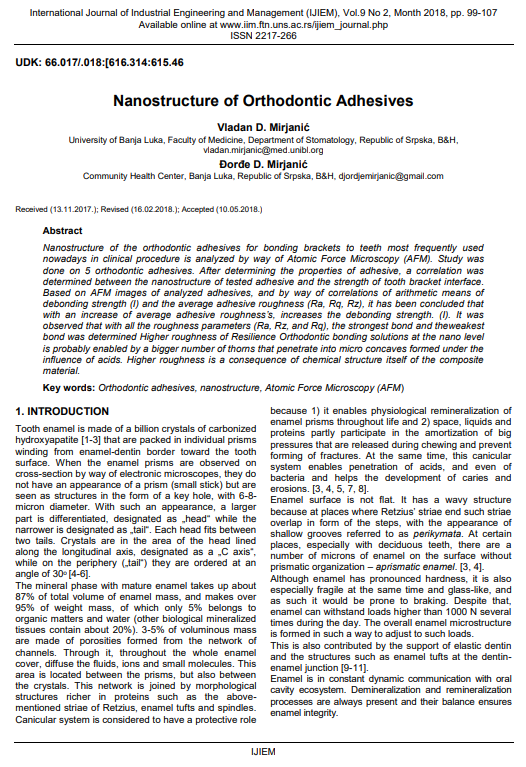
Published 2018-06-30
abstract views: 27 // FULL TEXT ARTICLE (PDF): 0
Keywords
- Orthodontic adhesives,
- nanostructure,
- Atomic Force Microscopy (AFM)
How to Cite
Copyright (c) 2023 International Journal of Industrial Engineering and Management

This work is licensed under a Creative Commons Attribution 4.0 International License.
Abstract
Nanostructure of the orthodontic adhesives for bonding brackets to teeth most frequently used nowadays in clinical procedure is analyzed by way of Atomic Force Microscopy (AFM). Study was done on 5 orthodontic adhesives. After determining the properties of adhesive, a correlation was determined between the nanostructure of tested adhesive and the strength oftooth bracket interface. Based on AFM images of analyzed adhesives, and by way of correlations of arithmetic means of debonding strength (I) and the average adhesive roughness (Ra, Rq, Rz), it has been concluded that with an increase of average adhesive roughness’s, increases the debonding strength. (I). It was observed that with all the roughness parameters (Ra, Rz, and Rq), the strongest bondand theweakest bond wasdeterminedHigher roughness of Resilience Orthodontic bonding solutions at the nano levelis probably enabled by a bigger number of thorns that penetrate into micro concaves formed under the influence of acids. Higher roughness is a consequence of chemical structure itself of the composite material.
Article history: Received (13.11.2017); Revised (16.02.2018); Accepted (10.05.2018)

